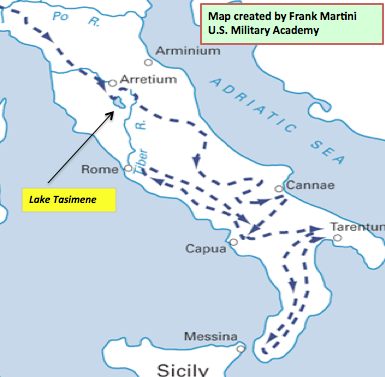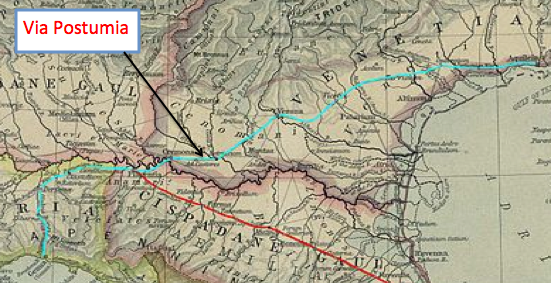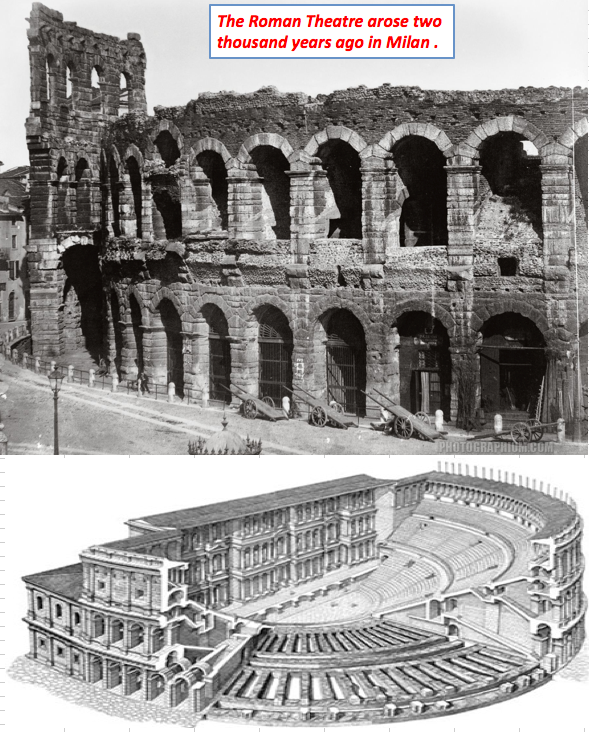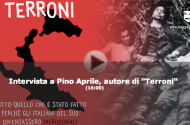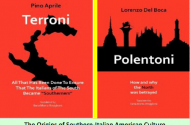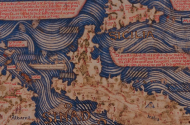Mediterranean Culture – South of Rome
Circa 800 B.C. the Greeks began to colonize the southern most parts of the Italian peninsula and eastern Sicily (e.g. founded Taormina). At the same time Phoenicians, coming from the area of present day Lebanon established trading centers in western Sicily (e.g. founded Palermo).
The coming of these two, albeit very different, Mediterranean people melding with the indigenous Mediterranean Latin people of southern Italy and Sicily formed the basis of the Mediterranean Culture that has prevailed down to the present.
That original culture evolved with the influx of new Mediterranean people (e.g. Carthaginians from north Africa), and new ideas from other parts of the Mediterranean:
- -Archimedes of Syracuse Sicily studied in Alexandria
- -Coins found in Sicily were imprinted with the head of Egypt’s Ptolemy II
- -Greek general Pyrrhus used war elephants against the Romans – an idea that came from Alexander the Great’s experience in India.
Rome from its inception was also a Mediterranean culture.
Ethnically, Romans were Latins as were the Sicilian Sikans and Siculi. Roman architecture and art is indubitably Greek, and ancient literary references identify “Rome as an Hellenic City”.
Classical Scholar A. J. Toynbee writes:
“There would be a sense in which Rome had been 'an Hellenic city' already before the first stone of the material structures had been laid..." (“A Study of History” vol. 8, p.706)
“Referring to the capture of Rome by the [barbarian] Gauls circa 390 B.C.: Heracleides Ponticus mentions, in his treatise on the Soul, ... 'a host had burst in from the outer darkness of the land of the Hyperboreans and had captured a Hellenic city called Rome ...' (“A Study of History” vol. 5, p 212 n3)
In short, before Rome unified the whole of Peninsular Italy, after the Hannibal Carthaginian War (217 B.C. – 201 B.C.), South of Rome was a mighty flourishing high Mediterranean civilization and culture; whereas, there was virtually no civilization North of Rome.
Culturally Devoid Northern Italy before the Romans
In “a picture is worth a thousand words” department, the following map of Hannibal’s trek through Italy clearly implies there was little of any significance north of Rome. In one year, only stopping to fight and defeat the Romans at Lake Tasimene, Hannibal marched straight to the South of Italy, where he spent near 13 years ravaging the people and economy.
More specifically, Toynbee writes about Hannibal’s effects on Italy:
“The region that escaped the most lightly was North-western Peninsular Italy extend as far south-eastward as Rome.
This region had been at war for no longer than the first few weeks of the campaign season of 217 B.C. After crossing the Appennines from the Po basin, Hannibal … did not linger there. After his victory at Lake Tasimene Hannibal headed for Apulia; he never set foot in North-Western Italy again.” (“Hannibal’s Legacy” v.2, p.10)
In short, there was nothing in northern Italy of significant value. What Hannibal wanted was the immense wealth of the high Mediterranean society South of Rome. And, for the next thirteen years (216 B.C. – 203 B.C.) Hannibal fought ferociously, to subdue the armies, people and culture South of Rome – but to no avail! The people South of Rome (the progenitors of southern-Italian Americans) simply would not yield!
1st Risorgimento
After evicting Hannibal from Italy in 203 B.C., the Romans were free to move north up to Alps, bringing the high Mediterranean culture to the Euro-Asian inhabitants (Celts, Ligurians, Boii, etc.).
Capital Investment in Conquered Lands
The Romans, while benefiting from the agricultural and mineral wealth of northern Italy did not simply extract the wealth and exploit the people. The Romans built transportation systems in the form of roads and bridges. Toynbee writes:
“Romans built the Via Postumia road linking Aquileia [on the Adriatic near Trieste] with Genua [Genoa] along an alignment via Verona, Cremona, Placentia, Dertona, and Libarna.” (“Hannibal’s Legacy” V.2, p.264)
They also built bridges such as the still standing and in use Pons Maroreus crossing the Adige Rive in Verona – picture below.
The Romans built magnificent community architecture structures such as the amphitheater in Milan pictured below
Attitude Toward People Conquered Lands
A more important indicator of the Roman commitment to genuine Risorgimento was the attitude towards the conquered people. While the Roman army was ferocious in the conquering process, when peace came they harbored no racist segregations attitude toward the people in northern Italy. Toynbee writes:
“The installation of military garrisons brought civilian settlement in its train…
For example:
“The Roman legionaries …were permitted to enter into permanent marital relations with concubines and to bring up families; and, after their discharge, they were able, by an easy process of law, to convert a concubinate into a legal marriage and to obtain retrospective legitimization for their children born out of wedlock.”
“Auxiliaries, who were recruited from among the Roman Empire’s subjects, and not from among its citizens, seem to have been given the franchise upon their discharge at the end of full statutory term of service and sometime earlier.” (“A Study of History” v.7, p.132)
Mediterraneanize Conquered Lands
Toynbee writes:
“The Roman imperial Government did not confine its program of civilian colonization to the establishment of colonies of the ruling Latin nationality. It set itself systematically to Latinize – and thereby indirectly Hellenize [Mediterraneanize] in Latin Dress – the barbarians on who it had imposed its peace. (“A Study of History” v.7, p.134)
2nd Risorgimento – Oh my! What a difference!
Again in 1860, as in the 390 B.C. and 450 A.D. northern barbarian assaults on Rome, in Heracleides words:
"a host had burst in from the outer darkness of the land of the Hyperboreans and captured a [Mediterranean Society]".
In 1860 the Northern Italian Piedmontese launched their invasion of the Kingdom of the Two Sicilies (i.e. Garibaldi in Sicily). Like their progenitors (Goths, Franks, Huns, Lombards, etc.) who stormed off the Euro-Asian Steppes destroying Roman Mediterranean Civilization in Italy, the Piedmontese followed suit bringing a wrath of terrorism, and political, economic and cultural destruction down on the Mediterranean Italian people South of Rome (see: Dickie’s Darkest Italy”; Aprile “Terroni”; D. M. Smith “Modern Sicily”, etc.).
In the decades that followed, southern Italy and Sicily were de facto colonized. The material wealth was extracted to the benefit of northern Italy and tens of millions of southern Italians and Sicilians became de facto refugees in the Americas.
This Piedmont holocaustic invasion of the Two Sicilies has come to be known as The Risorgimento, which has taken on the connotative mean in the English language ‘unification of Italy’. In that sense of the word (unification), it more accurately denotes the second unification of the Italian peninsula. The first, as noted above, was the Roman unification post- 200 B.C., after the Hannibal Carthaginian War.
However, unlike the Roman Risorgimento that achieved unity by bringing the glorious Mediterranean culture to the people of northern Italy; the Piedmontese Risorgimento achieve unification by the methods of their Euro-Asia ancestors: terror, destruction and refugee-ization.
Whereas the people of southern Italy suffered incomprehensibly at the hands of their northern Italian Piedmontese invaders, the people of northern Italy benefited mightily from the Roman invasion that brought Mediterranean civilization to them.
Pedagogical Implications
Today, the southern-Italian American progeny of the southern Italian Mediterranean civilization have no access to the history of their mighty 3,000-year old culture. Philo-Renaissance literati and post-Ellis Island nostalgics sit in the “Chairs of Wisdom” in the American university system. The history and culture of Italy South of Rome is nonexistent.
The southern-Italian American people have been “culturally lobotomized!”

